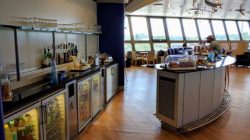Barcelona has lots to do, and even though my wife and I arranged for five nights during our trip — the longest in any city — we probably could have spent longer. However, it’s important to plan for crowds if you’ll be visiting during popular times. On at least three occasions we traveled across the city to visit some attraction, found a huge line for tickets, and then learned even once we purchased a ticket we wouldn’t be able to enter until two or three hours later. (Tickets often have timed entries with 15- or 30-minute windows.)
As much as Megan hates to outline her vacations in advance, Barcelona is huge city that requires some kind of plan in order to be a successful tourist. Our policy was to organize one “fixed” event each day. This would hopefully enable some flexibility for us to wander at our own pace before and after. In addition to this post, be sure to check out the Barcelona Tourist Guide, one of the better resources available on the Internet.
Trip Report Index:
- Two Weeks in Spain
- Is the British Airways Travel Together Ticket a Good Deal?
- British Airways Concorde Room – New York
- British Airways First Class – JFK to LHR
- Transferring at London Heathrow
- Le Meridien Barcelona
- Places You Need to Visit in Barcelona
- Restaurants in Barcelona
- Vueling Airlines – Barcelona to Granada
- AC Palacio de Santa Paula Granada
- Hotel Alfonso XIII Seville
- AVE Preferente Class Seville to Madrid
- Day trip to Cordoba
- Westin Palace Hotel Madrid
- British Airways Concorde Room – London
Transportation from the Airport and around the City
Barcelona has an excellent transit system and beautiful public spaces, but I still think the layout is more comparable to Los Angeles than your typical urban, walkable European metropolis. Be aware of this if when planning your visit. When bringing my wife on this trip, I chose to stay at Le Meridien in part because of its location in the heart of La Rambla. You can walk from there to most sights, with the exception that the beach, Park Guell, and Sagrada Familia are a bit far.
I recommend bus or taxi when traveling to/from the airport. Taking the commuter rail on my first trip years ago required first traveling by bus to the airport’s train station and later making connections to the local subway within the city. It’s not worth the hassle when you’re carrying luggage. We paid about €30 to reach our hotel by taxi.

Taxi rides to sites within the city such as Park Guell, Playa de Sant Sebastià, and La Pedrera were also reasonable and about €5-15. But if you have the time, subway tickets are the best deal. Get a pack of 10 tickets (a “T10” card) for roughly €1 per trip. This is half the usual price and was sufficient for our needs even during a five-night stay, taking advantage of the Liceu station a few blocks from the hotel and also a lot of walking elsewhere (we like to explore).
Note that the beach was one of the more expensive destinations for us to reach by taxi. If you’re a Starwood fan debating the relative merits of Le Meridien and W Barcelona, the W may be a better choice if you prefer the sun and Le Meridien if you prefer the city.
Getting Tickets to Gaudi Attractions in Barcelona
I’d guess the two most popular tourist destinations in Barcelona are Gaudi’s Park Guell (originally meant to be a private housing development) and Sagrada Familia (a Catholic Cathedral still under construction). His wild architectural designs are unlike anything you’ve seen before, and both are very, very popular. Make sure you purchase tickets online unless you’re visiting during a slow period. You can wait until the day before if you want to keep things flexible. I usually plan for outdoor activities in the morning before it heats up and indoor activities for the afternoon when I want to cool off.
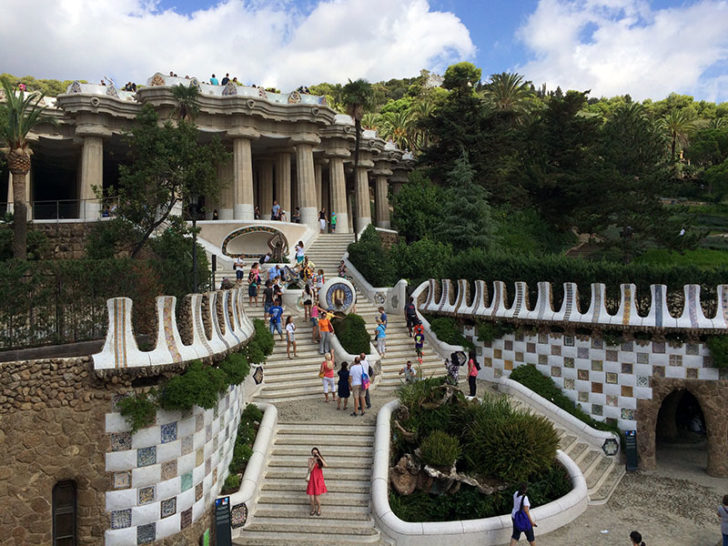
Guided tours are not my style, so in most cases I opted for an audio guide, if available. Don’t worry about purchasing lots of additional extras. Gaudi’s personal home at Park Guell is not critical to enjoying the rest of the gardens. But some secondary tours can impact the timing of your main ticket. For example, I think most people (if you’re not afraid of heights) should get a ticket to climb one of the towers at Sagrada Familia.
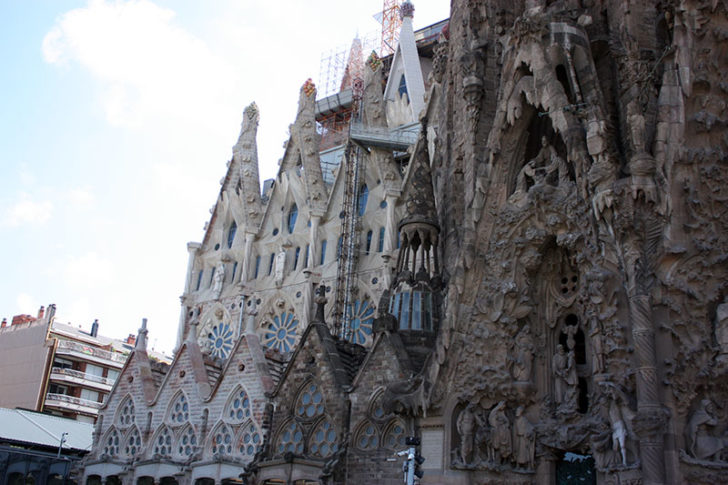
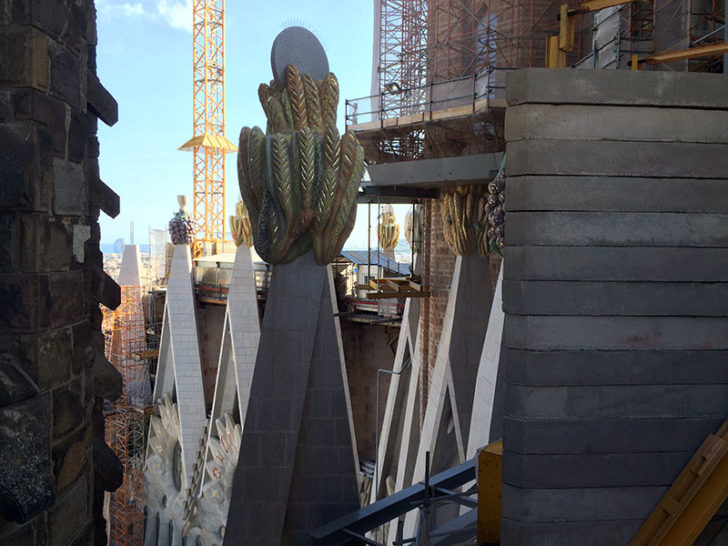
Those have their own time stamps, so you won’t want to buy a ticket for the main cathedral unless you can also get a ticket for the tower. Don’t forget the museum underneath the cathedral that details the evolution of its design.
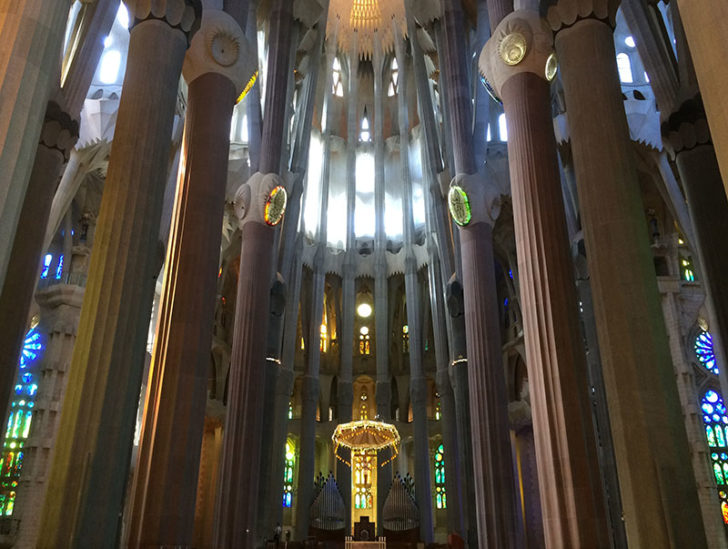
Sagrada Familia has a metro station next door, but Park Guell is more difficult to reach. A taxi will drop you off at the main entrance. If you want to use the metro, exit at Vallcarca or Lesseps.
- I prefer Vallcarca. Exit and walk downhill for a few blocks before climbing a series of escalators and stairs to reach the public park behind Park Guell. You’ll walk down a path to reach a side entrance. It’s more demanding but much more scenic.
- Lesseps will drop you off in a major public square, and you’ll need to walk along a busy road to reach the main entrance. It’s less steep and less pleasant.
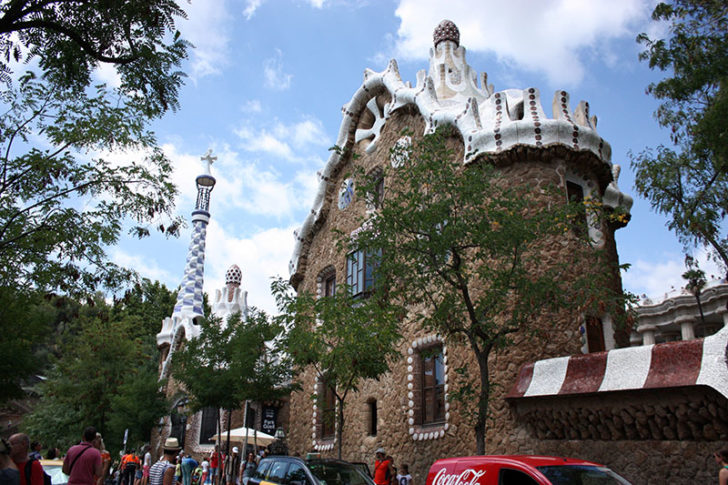
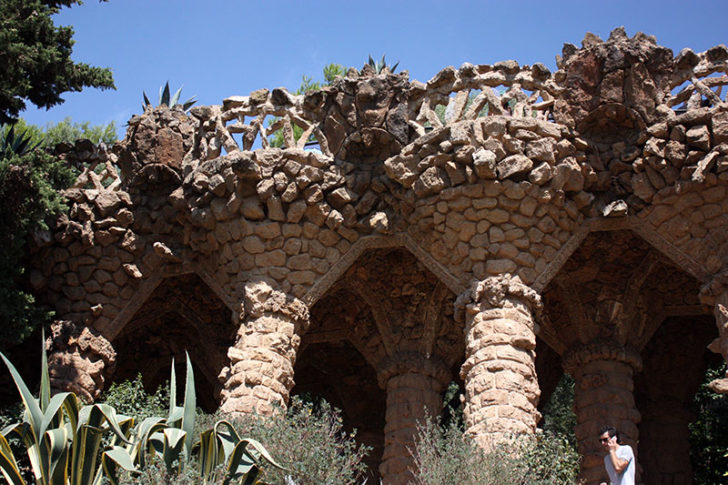
Many other Gaudi attractions exist, often with a hefty entrance fee. La Pedrera (also known as Casa Milà) and Casa Batlló are two residential buildings within a couple blocks from each other on Passeig de Gràcia. You should visit at least one, but it’s not necessary to see both.
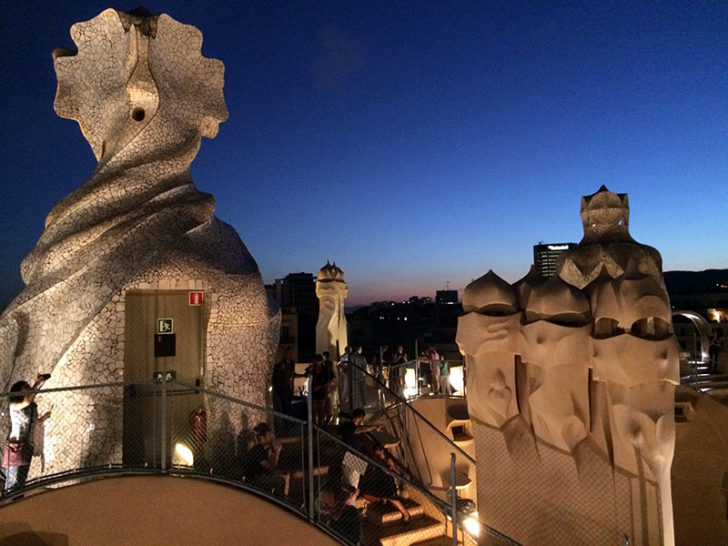
I’d recommend Casa Batlló for the more interesting interior and informative audio guide, which uses a small tablet to show you what to look at. La Pedrera is mostly interesting for its exterior. That said, architecture buffs like my wife may like La Pedrera better because it has a museum in the attic devoted to other Gaudi buildings. Both buildings have events on the rooftop (we went to a jazz concert at La Pedrera) and various light shows at night if you’re looking for something different.

And if you want to visit a gift shop, you can go to the one at La Pedrera without paying admission. It is probably the best of any tourist site in Barcelona precisely because it emphasizes design in general and not thousands of cheap items with Gaudi stuff printed on them.


Other Great Attractions
You can probably spend all week looking at Gaudi, but I don’t recommend it. Other great attractions can be less expensive or even free. I strongly recommend going to the beach for a day. Chairs and umbrellas from the numerous restaurants can be rented for about €6-8 and include table-side service. Alternatively, head up to the bar. But don’t get the watered down drinks from hawkers roaming back and forth.
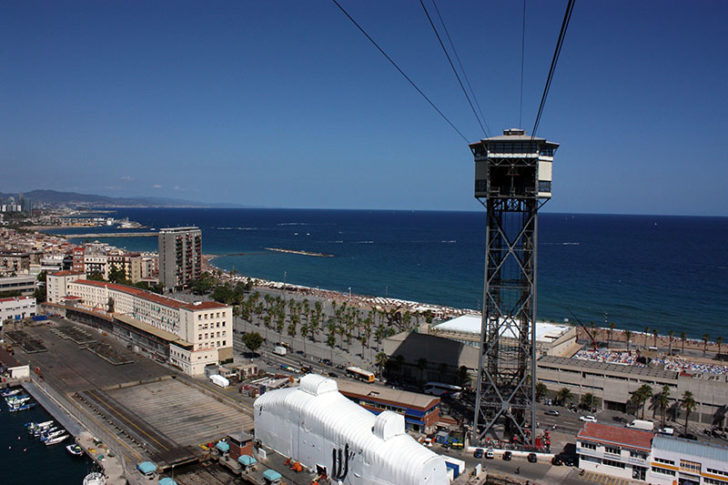
Walking through the Gothic Quarter and the City Park are completely free. If you are staying in La Rambla, you’ll already be on one edge of the Gothic Quarter, so it’s easy to walk through the twisting streets to explore on your way to the park. Head the other direction and you’ll find a much larger park, Montjuïc.
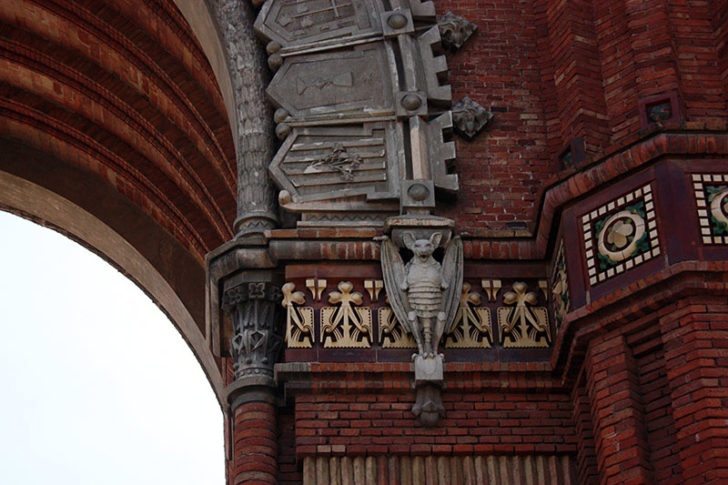
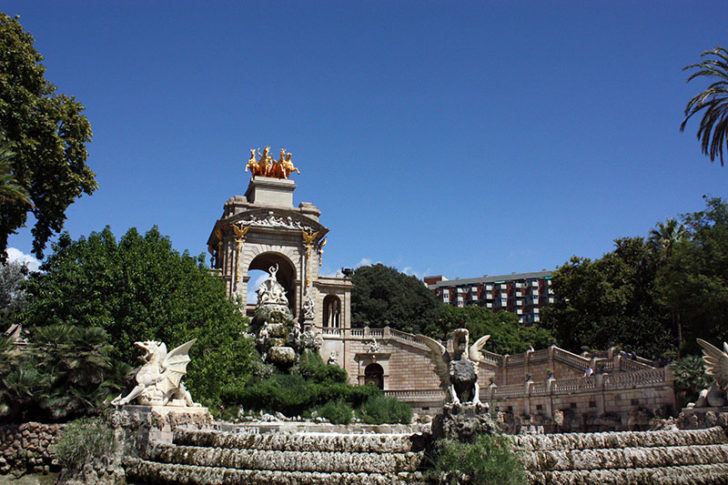
Montjuïc
Attractions located on or connecting to Montjuïc require their own section because the place is so enormous. I’ll compare it to San Francisco’s Golden Gate Park on a hill, with different gardens and museums sprinkled throughout. You could take a taxi, but I don’t recommend it. Take your time and explore.
In that light, the easiest way to reach Montjuïc is using the funicular that connects to the Paral-lel station on the Barcelona metro. It’s a free transfer just like any other metro ride and takes you half-way up the mountain, adjacent to the Montjuïc cable car (an additional charge) that then continues the rest of the way to Castell de Montjuïc. The old fort is only €5 to enter and has amazing panoramic views of the city.
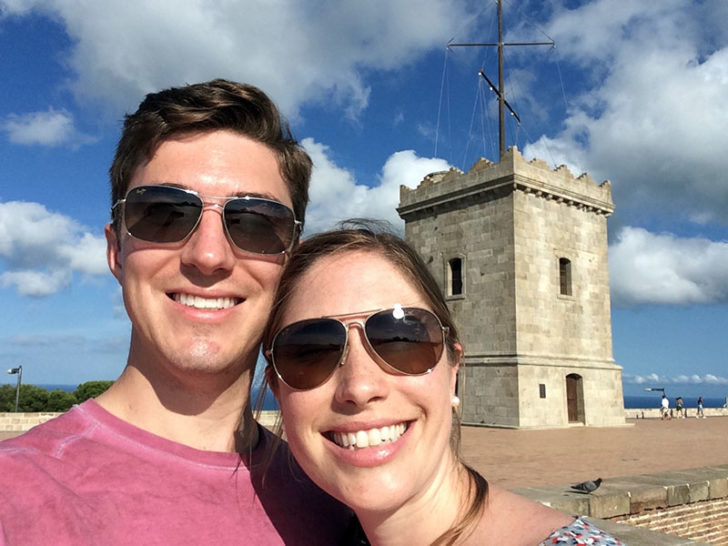
A more interesting entrance is to exit the metro at Plaça d’Espanya and climb past the endless fountains to Palau Nacional. Some escalators do exist, but don’t expect it to be easy if you have low mobility. Like the Palace of Fine Arts in San Francisco, it was built for an international exhibition, but instead of lying empty it now holds a large collections of Catalan art and design. I personally enjoyed the view outside better than the art inside (Megan would disagree), but I was pretty exhausted by the time we reached it. Fortunately tickets (~€12) are good for two days so you can come back later.
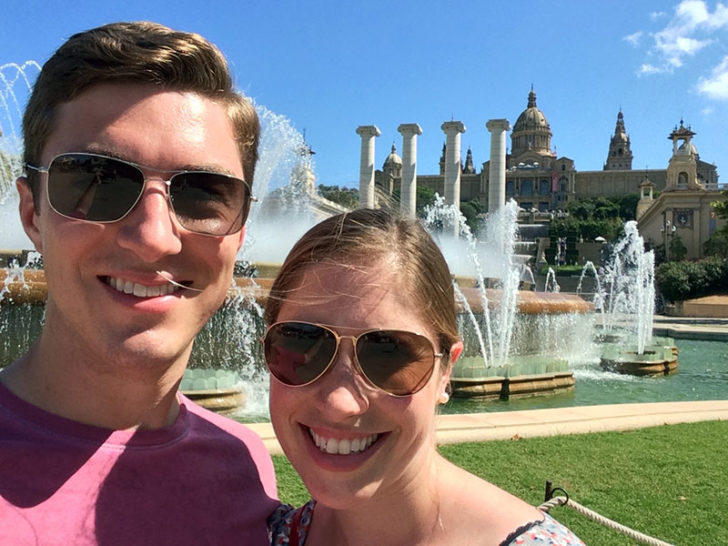
Before beginning our climb, we stopped by a reconstruction of the Barcelona Pavilion designed by Mies van der Rohe for use by the Germans in the 1929 International Exposition. It’s an iconic example of modernist architecture and also where the original Barcelona chair was displayed. However we did not have the €5 cash admission and could only view it from the outside. Megan was still pretty psyched.

Within Montjuïc are several manicured gardens, playgrounds, and other areas to relax. We very much wanted to visit the Jardins de Joan Maragall, a very formal garden with sculpture and flower beds, located immediately behind the Palau Nacional. However, the entrance was difficult to find and we eventually learned it was only open on weekends, so we made several frustrated visits before giving up. The Jardins de Laribal are open every day and have more “natural” plant life along with several fountains and waterfalls.

The one activity I don’t recommend is the Teleferic cable car that crosses the port, taking you between the beach and Montjuïc. It’s not particularly expensive, but only two cars operate at any one time. The wait is over an hour and drops people off at a relatively inconvenient location on Montjuïc that’s not close to anything but two overpriced restaurants. There are better ways to catch a view.
This post is longer than I expected, so I’ll include a short list of dining suggestions in a future installment.




